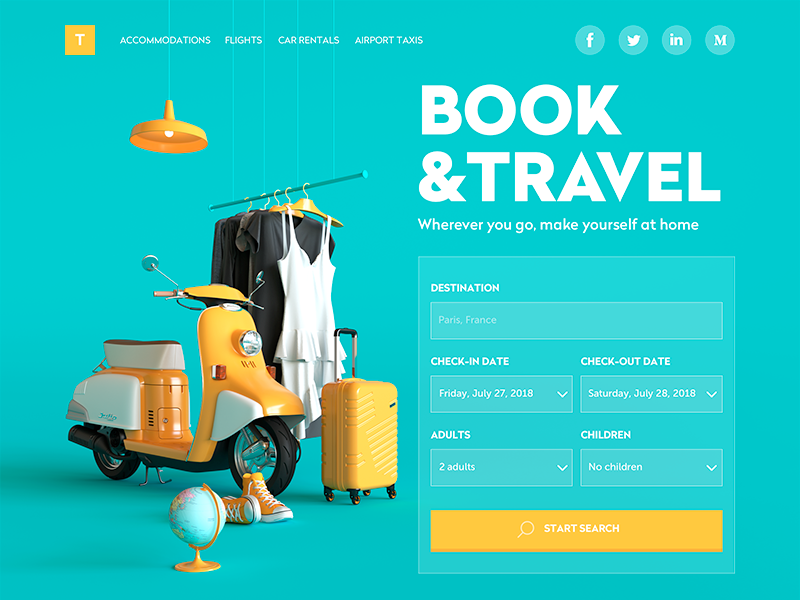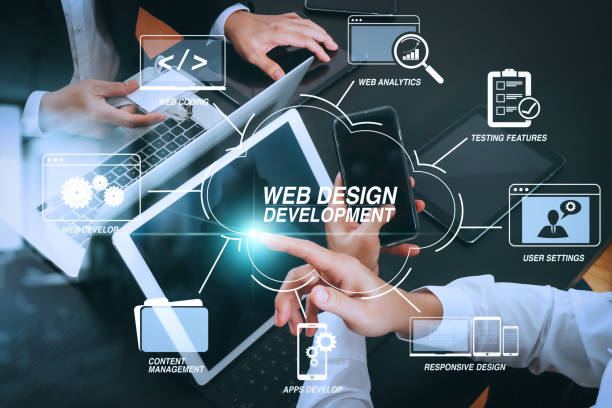Aligned Position Web Design: Delivering High-Quality, User-Friendly Web Designs for Every Industry
Aligned Position Web Design: Delivering High-Quality, User-Friendly Web Designs for Every Industry
Blog Article
The Most Effective Kinds of Web Layout to Improve Customer Experience and Interaction
In the ever-evolving landscape of digital interaction, the efficiency of Web style considerably affects user experience and involvement. Different design methods, such as minimal, receptive, and interactive designs, each offer unique advantages that can deal with diverse individual requirements. Comprehending which kinds of Web style finest serve these goals can be essential for organizations intending to improve customer fulfillment and retention. The question stays: which style aspects really resonate with individuals and foster purposeful involvement? The exploration of these concepts discloses essential understandings that may redefine your technique to website design.
Minimal Web Design
As electronic landscapes end up being increasingly cluttered, minimal Web style has actually become an effective strategy to enhancing individual experience. This design approach focuses on simplicity, focusing on crucial components while getting rid of unneeded distractions. By making use of ample white space, straightforward navigating, and a minimal color scheme, minimalist style promotes clearness and directs customer interest to vital web content.
The core concept of minimalist website design is to create a seamless interaction for individuals. By decreasing cognitive tons, customers can promptly comprehend details without feeling overwhelmed. This direct method not only boosts use however additionally urges interaction, as site visitors are more probable to check out a site that is simple and aesthetically enticing to browse.
Furthermore, minimal layout frequently emphasizes typography and images, utilizing these aspects purposefully to share messages effectively. In essence, minimal Web style is not simply a pattern; it is a thoughtful approach that identifies the relevance of user-centered design.
Responsive Web Layout
In today's varied digital environment, receptive website design has actually become necessary for producing a smooth user experience throughout a wide range of devices. As individuals accessibility internet sites on smart devices, laptops, desktops, and tablet computers, the capacity of a site to adjust its design and web content to various screen dimensions and resolutions is vital.
Responsive website design utilizes flexible grids, photos, and CSS media inquiries to make sure that Web material exists efficiently, regardless of the gadget made use of. This method not just boosts the aesthetic allure of a website but additionally considerably enhances usability. Individuals are more probable to involve with a site that provides a constant experience, as it eliminates the disappointment of having to focus or scroll excessively.
By taking on responsive style, organizations can boost their visibility and get to a wider audience. In summary, receptive Web layout is a fundamental technique that boosts individual experience, interaction, and total fulfillment.
Interactive Website Design
Receptive Web style lays the groundwork for boosting customer experience, however interactive Web layout takes this an action further by engaging customers in a much more dynamic way - Aligned Position Web Design. By including elements such as animations, clickable models, and real-time responses, interactive Web design captivates users, attracting them right into a richer browsing experience
This technique not only promotes involvement but likewise urges customers to explore content proactively rather than passively consuming it. Strategies such as gamification, where users make incentives for completing jobs, can considerably click to investigate improve the moment invested in a website and boost general fulfillment. Interactive features can simplify intricate info, making it more delightful and absorbable.

Incorporating interactive layout components can also cause greater conversion rates, as customers are more probable to engage with a website that actively entails them. Aligned Position Web Design. Ultimately, interactive website design transforms individual experiences right into unforgettable journeys, guaranteeing that site visitors return time after time
Apartment Style
Defined by its minimalistic method, flat style stresses simpleness and functionality, removing unneeded aspects and concentrating on necessary functions. This layout viewpoint focuses on use, making certain that customers can navigate interfaces easily and effectiveness. By employing a clean visual, flat layout eliminates the mess often discovered in extra ornate styles, thus boosting individual concentrate on content and capability.
The characteristic of flat style exists in its use vibrant shades, simple typography, and geometric shapes. These aspects add to an aesthetically attractive user interface that is both modern and approachable. Additionally, flat style promotes a feeling of clearness, permitting customers to discern vital activities and details without disturbance.
Additionally, level style is especially reliable in receptive website design, as its simplicity equates well throughout various tools and screen sizes. The lack of complex appearances and slopes lessens loading times, which is essential for maintaining user engagement. As electronic landscapes remain to develop, level layout continues to be an appropriate selection for creating easy to use sites that enhance total experience. By concentrating on essential functions, flat design not just satisfies user needs yet likewise urges smooth interaction, making it an essential component of efficient website design methods.
Adaptive Web Layout
Flexible website design customizes the user experience by creating numerous taken care of designs tailored to different screen sizes and gadgets. Unlike receptive design, which fluidly changes a single layout, adaptive design employs distinct designs for certain breakpoints, making sure optimal discussion on various systems. This approach permits designers to concentrate on the unique attributes of each device, improving functionality by supplying precisely what customers require based on their context.
One of the main benefits of flexible website design is its ability to maximize tons times and efficiency. By offering tailored web content and pictures that fit the user's gadget, websites can lessen information usage and improve loading rates. This is especially helpful for individuals with slower links or restricted information plans.

Furthermore, flexible style assists in a more consistent and regulated branding experience. Because designers create numerous layouts, they can ensure that the aesthetic elements straighten with the brand name's identification across different systems - Aligned Position Web Design. This results in a cohesive user experience, check that boosting interaction and promoting customer retention
Final Thought
Minimal style promotes clearness and focus, while responsive design ensures flexibility Recommended Reading throughout various devices, advertising access. Jointly, these design comes close to contribute to the creation of user-friendly settings that not only enhance complete satisfaction yet likewise drive greater conversion rates, highlighting their important relevance in modern Web design approaches.

Minimalist style cultivates clarity and focus, while responsive style makes certain versatility throughout different tools, advertising accessibility. Collectively, these style comes close to add to the creation of user-friendly environments that not just boost complete satisfaction yet additionally drive greater conversion prices, underscoring their crucial value in contemporary Web style methods.
Report this page